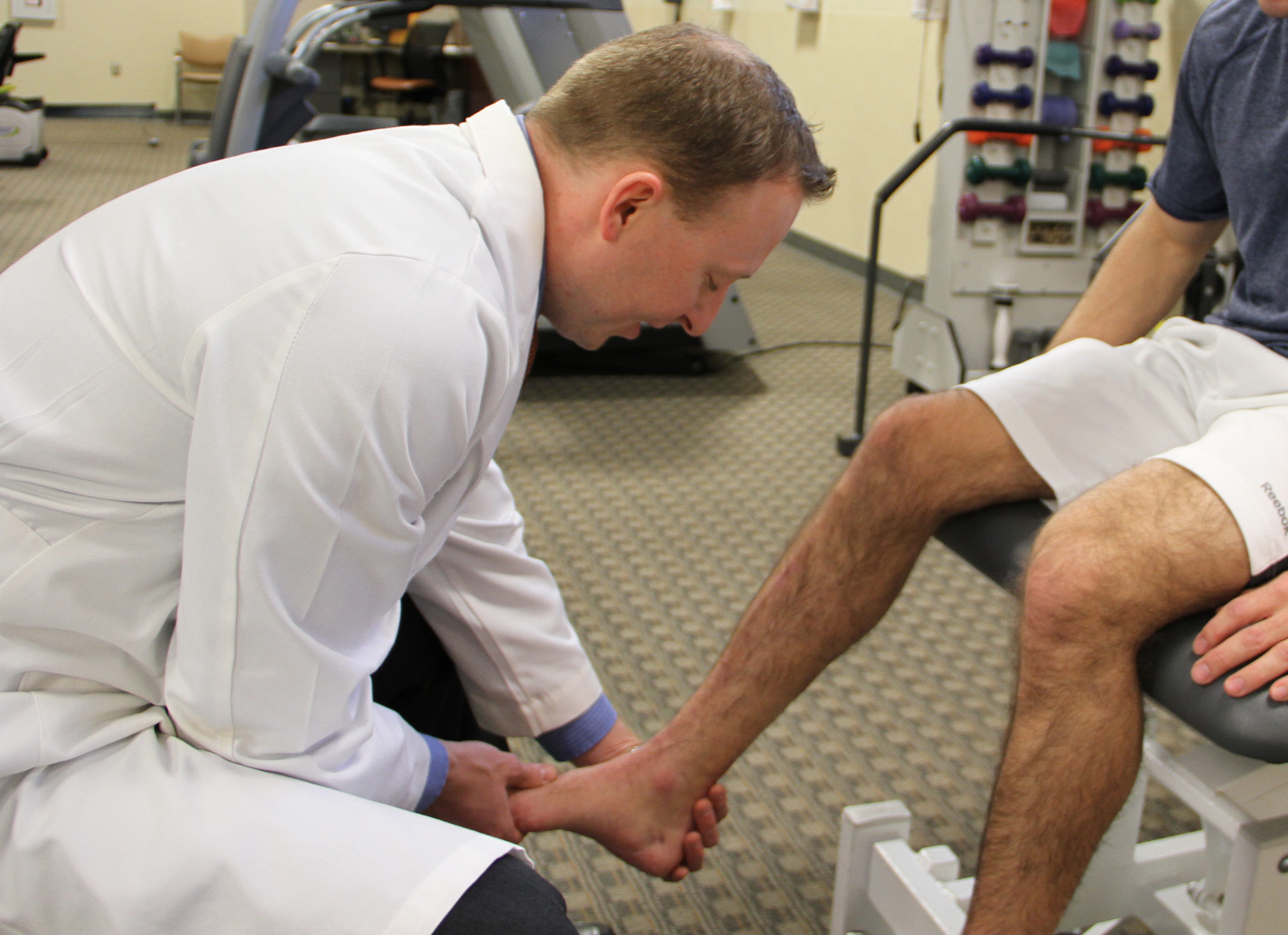March 2, 2015
 COLUMBUS, Ohio – The Achilles tendon is the strongest and thickest tendon in the body, but is also one of the most commonly injured. From elite athletes to weekend warriors, more than 250,000 Achilles tendon injuries happen each year in the U.S., many resulting in re-injury.
COLUMBUS, Ohio – The Achilles tendon is the strongest and thickest tendon in the body, but is also one of the most commonly injured. From elite athletes to weekend warriors, more than 250,000 Achilles tendon injuries happen each year in the U.S., many resulting in re-injury.That’s why Dr. Timothy Miller at The Ohio State University Wexner Medical Center created a new surgical technique, published online by Techniques in Orthopaedics, to repair torn Achilles tendons.
“We’re constantly looking for new and better ways to do surgery, make it safer, make it faster, make it more efficient and minimize the risk of complications,” said Miller, assistant professor of clinical orthopaedic surgery and sports medicine. “Given how strong the repair is and the minimal risk of re-tear, I think it will potentially become the gold standard for repair techniques.”
Traditionally, the sutures used to repair a torn Achilles are knotted together at the tear site, which can interfere with healing. Miller’s new technique strengthens the repair by moving the knots away from the injury site, thus decreasing the risk of re-tearing the tendon upon return to activity.
“We found that this suture technique is stronger than having just two, simple sutures going across the tear site, with knots near the tear site,” Miller said. “Now, we have a total of six strands of suture across the tendon, with no knots that could potentially interfere with healing. So it’s stronger and decreases the risk of re-tear.”
This technique also allows for patients to recover faster. With the traditional technique, it can take up to nine months for patients to get back to full activity. The new technique reduces that recovery time to six months.
The new technique will help patients like Miguel Pineda of Columbus, OH. He’s a former gymnast and extreme athlete who tore his Achilles tendon while training for an American Ninja Warrior competition.
“The fact that there’s a much lower chance of re-tear is really important to me because I want to go back to doing American Ninja Warrior again. I want to not have concern in the back of my head wondering if my Achilles is going to tear, rupture or have the threads not hold up,” Pineda said. “This new procedure puts me at ease.”
###
Contact: Alexis Shaw, Wexner Medical Center Public Affairs and Media Relations, 614-293-3737 or Alexis.Shaw2@osumc.edu

